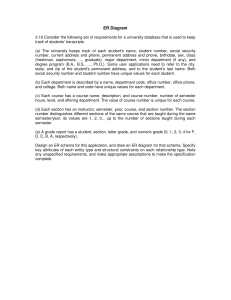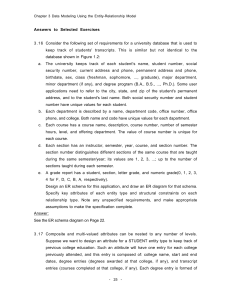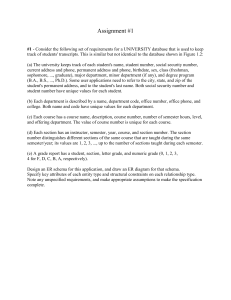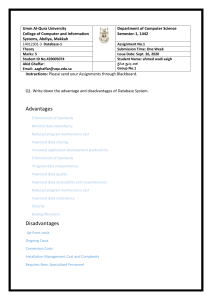HomeWork - Philadelphia University
advertisement
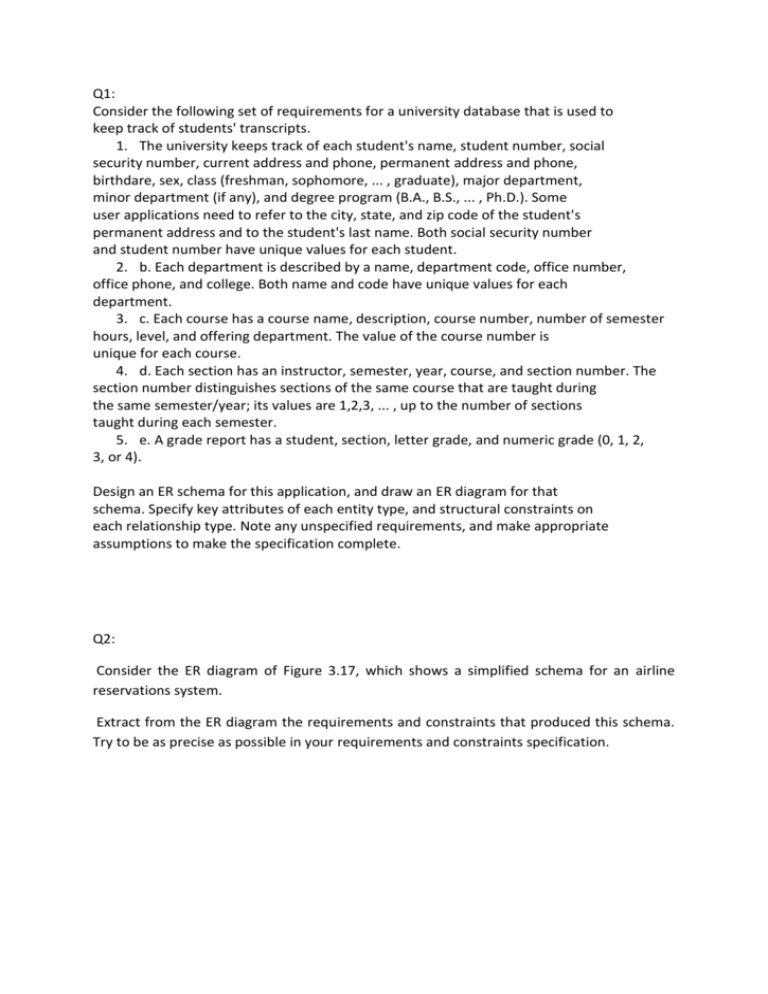
Q1: Consider the following set of requirements for a university database that is used to keep track of students' transcripts. 1. The university keeps track of each student's name, student number, social security number, current address and phone, permanent address and phone, birthdare, sex, class (freshman, sophomore, ... , graduate), major department, minor department (if any), and degree program (B.A., B.S., ... , Ph.D.). Some user applications need to refer to the city, state, and zip code of the student's permanent address and to the student's last name. Both social security number and student number have unique values for each student. 2. b. Each department is described by a name, department code, office number, office phone, and college. Both name and code have unique values for each department. 3. c. Each course has a course name, description, course number, number of semester hours, level, and offering department. The value of the course number is unique for each course. 4. d. Each section has an instructor, semester, year, course, and section number. The section number distinguishes sections of the same course that are taught during the same semester/year; its values are 1,2,3, ... , up to the number of sections taught during each semester. 5. e. A grade report has a student, section, letter grade, and numeric grade (0, 1, 2, 3, or 4). Design an ER schema for this application, and draw an ER diagram for that schema. Specify key attributes of each entity type, and structural constraints on each relationship type. Note any unspecified requirements, and make appropriate assumptions to make the specification complete. Q2: Consider the ER diagram of Figure 3.17, which shows a simplified schema for an airline reservations system. Extract from the ER diagram the requirements and constraints that produced this schema. Try to be as precise as possible in your requirements and constraints specification.
